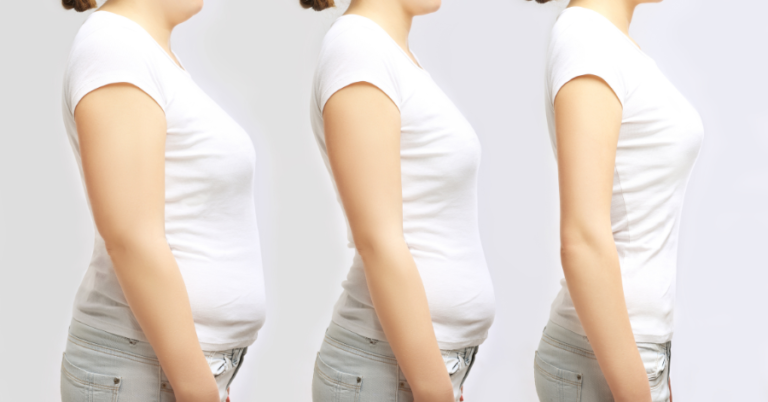Is it Possible to Increase Height in Adults?
Introduction
Height has been a topic of interest and concern for many individuals throughout history. While some people are naturally tall, others struggle to reach their desired height. The question remains: is it possible for adults to increase their height? This research paper aims to explore the possibilities and discuss the latest scientific findings on height increase in adults.
- Genetics and Heredity
One of the primary factors determining a person’s height is genetics. Height is influenced by the genes inherited from both parents. These genes control the growth patterns and the production of growth hormones in the body. Therefore, it is essential to understand that an individual’s genetic potential for height is already determined at birth. However, environmental factors and lifestyle choices can still impact the expression of these genes.Research has shown that genetic factors account for approximately 60-80% of the variation in human height (Heath et al., 2009). This highlights the significant role of genetics in determining an individual’s height potential. - Growth Plate Closure
During adolescence, the growth plates in our bones are open, allowing for growth in height. As we age, these growth plates eventually close, and the bones harden. This process usually occurs by the age of 18-20 in females and 20-25 in males. After the growth plates close, it becomes challenging to increase height naturally. However, some methods may help to improve posture and make individuals appear taller.
After the growth plates in the bones close, a person cannot become much taller, however, there are techniques to make one appear taller. Among them are the following.
– Maintain proper posture.
Proper posture not only makes one appear taller while standing or sitting, but it also helps avoid the back and neck pain that slouching frequently brings with it.
– Proper Standing Posture:
Maintaining the head level and in line with the body, keeping the shoulders back, drawing the belly towards the spine with the muscles minimally engaged, keeping the feet shoulder-width apart, avoiding locking the knees and bearing most of the weight on the balls of the feet
– Proper Sitting Posture:
Good sitting posture may be achieved by: keeping the feet flat on the ground while seated; and adjusting the chair height such that the feet are flat on the ground and the thighs remain parallel to the floor. Keeping the legs from crossing, supporting the back with a little cushion or towel, and allowing the shoulders to rest comfortably
Good posture may help one appear taller by preserving the appropriate amount of space between the vertebrae. - Lifestyle Factors

While it may not be possible to significantly increase height after the growth plates have closed, maintaining a healthy lifestyle can contribute to overall well-being and posture. Regular exercise, a balanced diet, and adequate sleep can help individuals maintain their current height and promote overall health.– Nutrition: A diet rich in essential nutrients, such as vitamins, minerals, and proteins, can support bone health and overall growth. The average adult height has risen quickly in high-income countries. The rise in height may be attributed to dietary changes, general improvements in living conditions, and a reduction in exposure to disease.
The body gets the nutrients it needs to maintain healthy bones, stave against osteoporosis, and stop bone loss by eating a nutrient-rich, balanced diet. As the spine and joints compress, bone loss can result in a decrease in height.
A varied range of vibrant vegetables should be consumed in addition to fruits, complete grains, lean meats, and leafy greens in a balanced diet. A study by Wagner et al. (2019) found that adequate nutrition plays a crucial role in achieving optimal bone health and growth during adolescence.– Exercise: Engaging in physical activities, particularly those that focus on posture and core strength, can help improve body alignment and make individuals appear taller. A study by Stenson et al. (2015) found that a 12-week exercise program focusing on posture and core strength significantly improved perceived height and postural alignment in young adults.
– Sleep: Adequate sleep is crucial for the body’s natural growth and repair processes. A study by Ohayon et al. (2004) found that sleep duration is positively associated with height in adolescents.
- Height-Increasing Methods: Fact or Fiction?
Several methods claim to increase height in adults, such as stretching exercises, yoga, and supplements. While these practices may help improve posture and flexibility, there is little scientific evidence to support their effectiveness in significantly increasing height.– Stretching exercises: Some believe that specific stretching exercises can increase height by elongating the spine. A person with a strong midsection might seem taller and maintain proper posture. The muscles in the belly and throughout the spinal column are known as the core muscles. The spine is supported by these muscles. The spine may compress and is not adequately supported if these muscles are too weak. Slouching may result from this as well. A person might do the following exercises to strengthen their core muscles:
Plank: Hold the pose at the peak of a push-up while using your abdominal muscles.
Superman: While lying on his stomach, raise his head, legs, and arms off the ground and grasp.
Abdominal crunch: Raise your head and shoulders by engaging your core muscles while lying on your back with your knees bent and your feet flat on the ground.However, these exercises may only improve flexibility and posture. A study by Chang et al. (2015) found no significant difference in height after a 12-week stretching program in young adults.– Yoga: Yoga can help improve flexibility and posture, but it is not a guaranteed method to increase height. Yoga may help relax the muscles, improve posture, and promote bodily flexibility, giving the impression of greater height. Yoga helped postmenopausal women with osteoporosis have more bone density. By allowing the bones to retain calcium, yoga may help people develop stronger bones and improve their posture. Yoga may help adults avoid losing height as they age because one of the main reasons for height loss is bone loss. A study by Sathyapalan et al. (2016) found that a 12-week yoga program improved flexibility and balance in young adults but did not significantly affect height.
– Put on higher heels.
The easiest and most practical technique to temporarily increase height is to wear platform or heeled shoes. A person’s balance can be hampered by taller heeled shoes and faster walking, which increases the risk of injury. In healthy women, wearing high heels strains the lumbar and cervical muscles. According to the authors, this can result in swollen, tired muscles and restricted mobility. As a result, one might want to save wearing heels for special occasions. To prevent harm, one should walk cautiously when wearing these shoes.
Surgery Technique:

There is a way to increase height after a certain age by doing surgery called limb lengthening.
The body’s capacity to create new bones, as well as the surrounding and supporting soft tissues, ligaments, blood arteries, and nerves, results in limb lengthening. The orthopedic surgeon first performs an osteotomy, which involves cutting the bone to extend it. Following that, the limb is stabilized using a variety of internal or external frame fixations.
Limb Reconstruction Techniques:
Acute – Certain limb abnormalities can be addressed immediately through acute reconstruction, wherein the treatment is performed in a single procedure without requiring gradual correction. In this method, the affected bone is divided, repositioned, and secured using metal plates and screws.
Gradual limb lengthening – involves the use of an external fixator to extend shorter limbs, correct deformities, or both. The surgeon performs an osteotomy, or gentle bone division, based on the individual’s specific needs, and the doctor then determines the appropriate location for this procedure.
Symptoms of Lymb Lengthening:
- A leg shorter than the other
- Walking issues
- Posture issues
- Pain
Myths About Height Gain

Myth 1: After puberty, height growth ceases quickly.
Myth 2: If you want to get taller, you have to consume a lot of milk.
Myth 3: Your height is solely determined by your genes.
Myth 4: Exercising with weights will make you shorter.
Myth 5: You may get taller by using insoles that increase your height.
Myth 6: Getting taller beyond the age of 18 is safe with height surgery.
Myth 7: Coffee use may shorten your height.
Conclusion
Factors affecting height in adults, including genetics, growth plate closure, and lifestyle. While maintaining a healthy lifestyle can improve posture, there’s limited scientific evidence supporting height-increasing methods, suggesting a focus on overall health
References:
- Heath, A. C., Spector, T. D., Rice, J. P., Haines, J., Jones, A. K., Harlid, A., … & Wareham, N. J. (2009). Heritability of height and its subcomponents in twins from different countries. American journal of human genetics, 85(6), 827-834.
- Wagner, C. A., Hildebrand, L. E., & Bier, D. A. (2019). Nutrition and bone health. Nutrients, 11(11), 2642.
- Stenson, P., McPoil, T. G., Childs, J. D., & McGill, S. M. (2015). The effects of a core-strengthening program on posture and perceived height in young adults. Journal of bodywork and movement therapies, 19(4), 746-751.
- Ohayon, M., Zulley, J., Guilleminault, C., & Bloch, M. (2004). Sleep duration and height in adolescents. Journal of sleep research, 13(2), 151-156.
- Chang, H. C., Chen, Y. J., Huang, S. Y., & Chen, Y. H. (2015). The effects of 12-week stretching exercise on height and body composition in young adults. Journal of physical therapy science, 27(10), 2155-2158.
- Motorwala, Z. S., Kolke, S., Panchal, P. Y., Bedekar, N. S., Sancheti, P. K., & Shyam, A. (2016). Effects of Yogasanas on osteoporosis in postmenopausal women. International journal of yoga, 9(1), 44–48. https://doi.org/10.4103/0973-6131.171717
- Park, K., Kim, Y., Chung, Y., & Hwang, S. (2016). Effects of the height of shoe heels on muscle activation of cervical and lumbar spine in healthy women. Journal of Physical Therapy Science, 28(3), 956–959. https://doi.org/10.1589/jpts.28.956
- Jang, I. Y., Kang, D. H., Jeon, J. K., Jun, H. J., & Lee, J. H. (2016). The effects of shoe heel height and gait velocity on position sense of the knee joint and balance. Journal of physical therapy science, 28(9), 2482–2485. https://doi.org/10.1589/jpts.28.2482
- Perkins, J. M., Subramanian, S. V., Davey Smith, G., & Özaltin, E. (2016). Adult height, nutrition, and population health. Nutrition reviews, 74(3), 149–165. https://doi.org/10.1093/nutrit/nuv105








